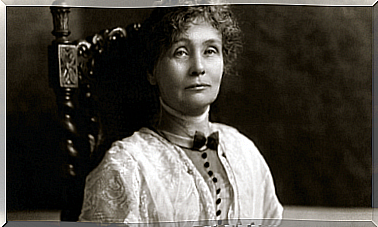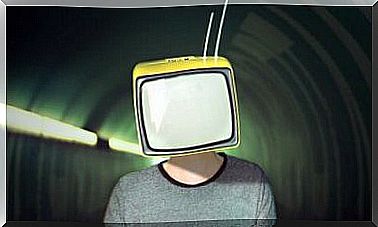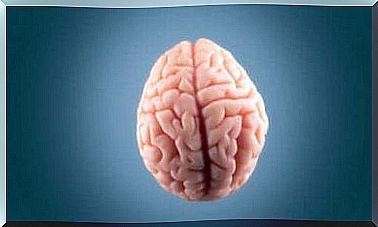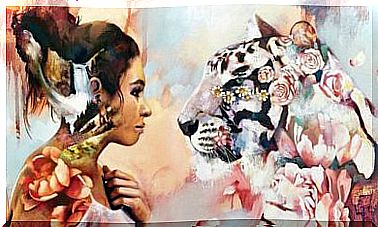The Birth Of The Ego

We can explain the birth of the ego on the basis of the development process and the learning process. It happens as we acquire our sensory and motor skills. The birth and development of our ego is worth mentioning because the ego is the center of the physical machine. It is the core of our desires, activities and inhibitions.
When the ego appears, it begins to connect with its own objects. At first these are external objects that the child feels as his own. Little by little the internalization and the psychic structures occur. In turn, these will contribute to the cohesion of self-esteem.
What is the birth of the ego like?
When a child is born, it makes no distinction between itself and the world. Rather, the child makes his first introjections in which he does not distinguish between the image of the object and the image of itself. The term introjection was first used by Sigmund Freud and stands for the incorporation of outer values and measures into the structure of the personality so that they are not perceived as external threats. Our emotional side allows us to tell the difference and distinguish between where we end and where the world begins.
Between the first and second year of life, the child’s cognitive ability increases. As a result, it begins to recognize the different roles in interpersonal relationships. Step by step, the identification and discrimination between the subject and the object begins.
After all, self-identity is a product of the composite function. This is where the objects are connected and integrated in a cohesive way. This is the highest level of the structure itself. It occurs partly due to the interaction between the self-consciousness and the objects.

The role of the mirror stage in the formation of the ego
A very important moment in the birth of the ego occurs between the sixth and eighteenth months of life. During this stage, the child experiments by trying to recognize himself in the mirror. It becomes interested in the image and experiences a certain pleasure in playing with these sensations.
The mirror is a metaphor that refers to the relationship of a human being with its environment. Being able to recognize your body and the imaginary space is a sign of healthy human development without the fragmentation of self-consciousness. A father or mother who does not properly care for or hurts a child will retain their image. At the same time, fragmentation can occur. This can lead to psychotic problems.
At that age, kids don’t just cling to just anyone. When they do it, they sometimes get anxious. That’s because the image they see doesn’t reflect what they expect. For example, when a six-month-old baby sees its mother instead of a stranger. The child does not recognize the mother. Children are more likely to recognize themselves through the mother.
The birth of a coherent ego occurs through a stable relationship with objects. It is based on the satisfying experiences that the child has at different times. The child more or less merges with the image they see of themselves (initial alienation).
Individualization
We call the process by which a person becomes aware of himself in totality, individuation. When this process is complete, the unconscious and the conscious integrate the ego into a wider personality. It is another step in the birth of the ego.
This is a process of unification, purification and discovery of oneself. The realization shows itself when archetypal images of the self appear.
The three functions of the ego
Body and mind are united and fused together. They are interconnected in a reciprocal way. As a result, the ‘ego’ or the union of body and mind performs three important functions:
- Control – the ego’s job is to control and direct instinctive impulses. By expressing or preventing things in feelings, the ego develops defense mechanisms in confrontation with potentially threatening stimuli.
- Adaptation – the ego connects to external and internal realities and tries to adapt to them.
- Integration – This refers to the ego’s ability to internalize different aspects of our lives.
Thus, in order to achieve the best adaptation to reality, the self-consciousness is able to defend itself against the excessive flow of motivational energy. The ego thus appears autonomously as if it were a composite of several functions.

The autonomy of the ego
Two structures make up the ‘ego’. The primary ego structure is a domain of the ego that is free from conflict with the “id” (the seat of the impulses). Later it has been called “the primary autonomous functions of the ego”. They correspond to memory, thinking and language. These functions do not act as an impulse (id) defense.
The conversion of instinctive and aggressive energies of the libido into non-instinctive energy neutralizes the energy that comes from the “id” (impulse). Hartmann gave the name ‘primary autonomy’ the autonomous development that does not arise from the struggle between impulse and desire.
On the other hand, the secondary ego structure or secondary function of the ego arises from a change in functioning. This change is composed of the ego structure conflicting with motivation, reality or morality and facing a non-conflict atmosphere.
Together with other authors, Freud (the psychology of the ‘id’), Hartmann (the psychology of the ‘ego’) and Kohut (the psychology of self-consciousness) are the main thinkers who place the ‘ego’ at the center of the psychological universe. place. From these different psychoanalytic points of view, we can better understand how the birth of the ego works.









